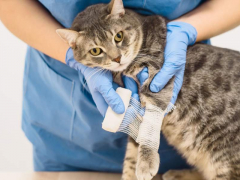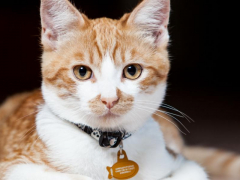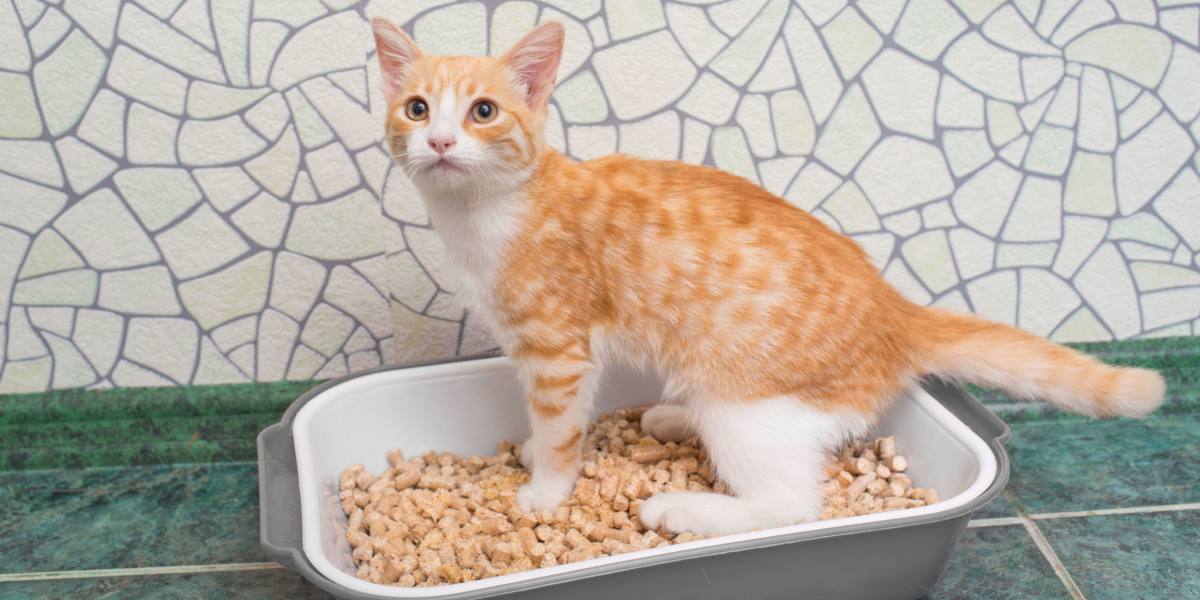
Do you keep an eye on your cat’s pee? A strange question, perhaps, but when it comes to our pets, even subtle clues left in their biological habits can give us hints about their health and well-being.
Monitoring your cat’s urination habits – the volume, color, odor, and frequency – can reveal early signs of problems, such as kidney disease, infections, or even diabetes.
Read on for our full guide on everything you need to know about cat pee!
Why Do Cats Pee on Things?
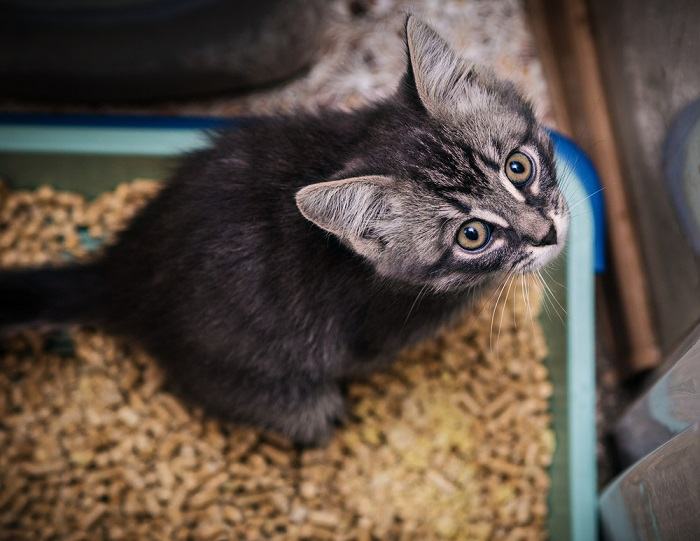
Cat pee can be an important sign of your cat’s overall health and well-being.
Cats are experts at hiding signs of stress, illness, pain, and disease. They can be very subtle with signs and symptoms, and therefore as cat owners, it is helpful to be proactive about monitoring our cats’ health. Looking at pee can be a surprisingly good way to tell how our felines are.
What’s the color and odor like? Are they peeing a lot or a little, and where? Have you found cat pee on the cushion or a stain on your wood flooring? All of these questions can give us useful information about our pet’s health.
Cats actually have two main functions for urine, with very different meanings.
1. Urination
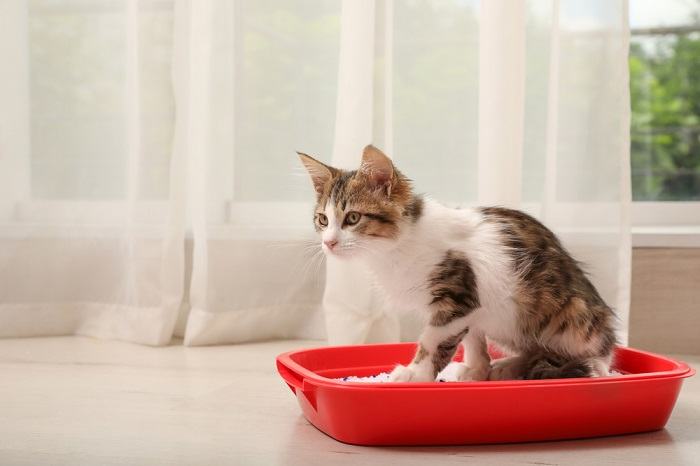
While cats can’t tell us exactly what they are going through, their bodily functions can often tell us much of what we want to know.
The main function of pee is to excrete water and waste products from the body via the kidneys. Waste products such as urea, creatinine, salts, and ammonia are filtered from the blood via the kidneys, transported to the cat’s bladder, and then expelled via urine.
Also Read: Blood In Cat Urine (Hematuria): Causes, Symptoms, & Treatment
2. Urine Marking
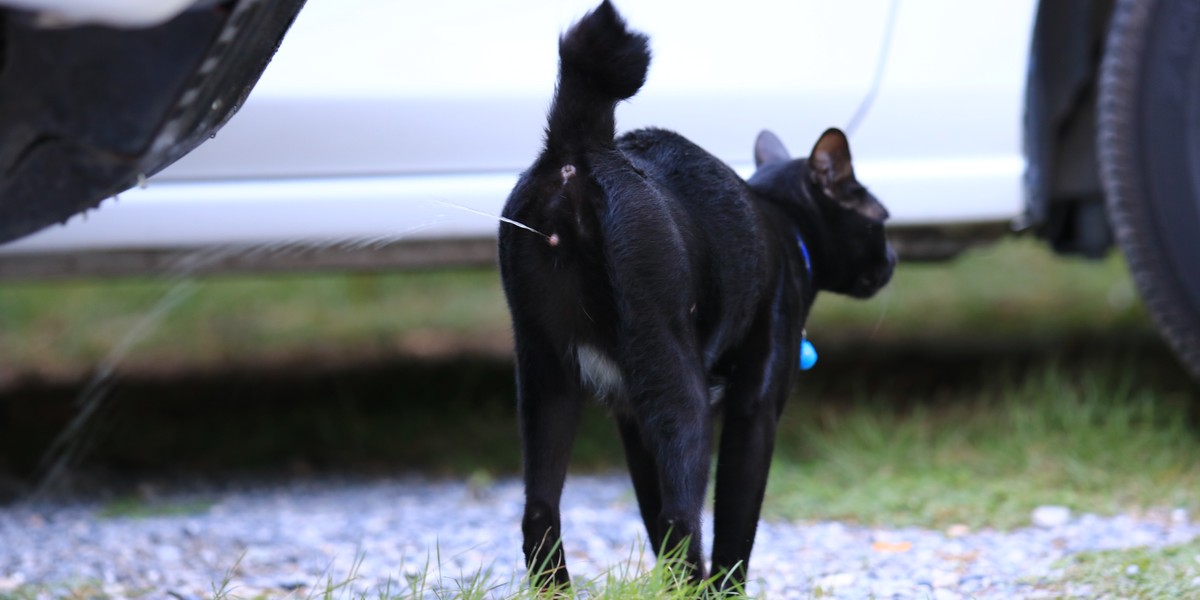
When cats spray, they are looking for a mate or marking their territory.
Cats spray urine to communicate – mostly marking territory, or to signal availability to potential mates. Spraying differs from normal urination in that usually only small amounts are passed, and cats choose very obvious places to mark, such as a doorway, new objects in the house, or busy thoroughfares in their environment.
If cleaned with normal detergent, the cat urine odor will persist, and the cat will ‘top up’ the urine so that the odor is fresh again.
Also Read: Top 11 Best Cat Urine Removers
How Often Should a Cat Pee?
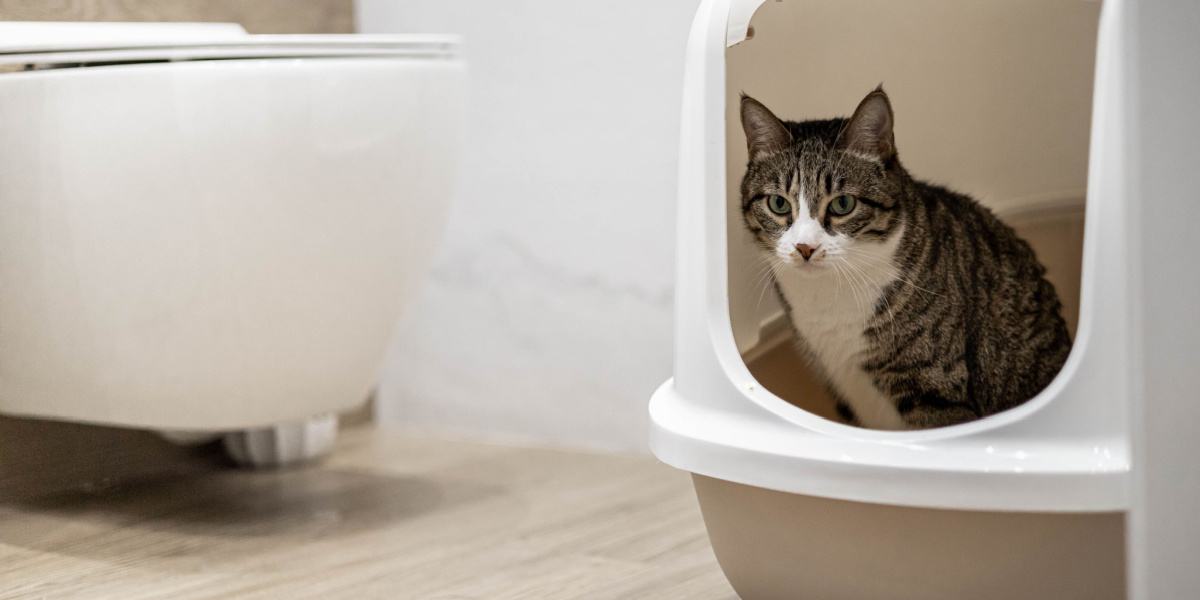
The frequency of your cat’s urination habits may be a subtle sign of your cat not feeling well.
Normal, healthy cats usually urinate 2 – 4 times daily. This is affected by their water intake, food type (wet foods vs. dry food), ambient temperature and humidity, and their level of activity. Urination frequency can also be affected by various health conditions such as kidney disease, cystitis, and diabetes.
If a cat is trying to urinate but not succeeding, they must be seen by a veterinarian urgently, especially male cats. Stones can block the passage of urine through the urethra, leading to an emergency situation.
How Much Should a Cat Pee?
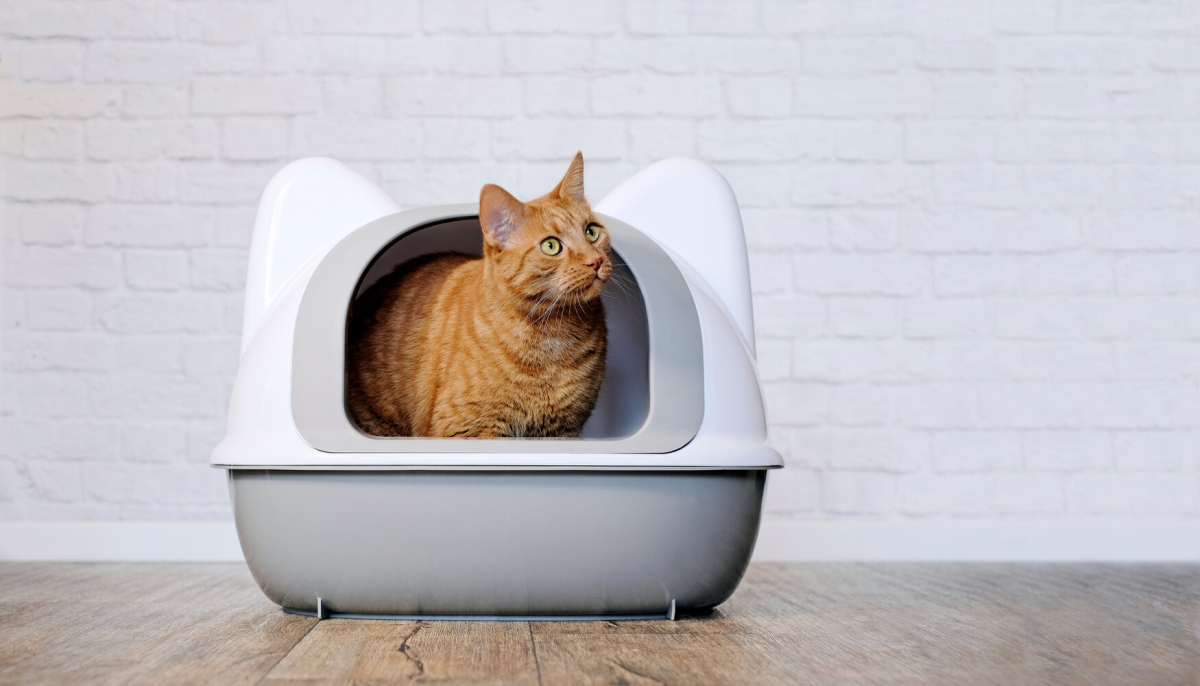
Monitoring your cat’s toilet habits can be challenging, but it is an important aspect of cat ownership.
The average cat produces a handful-sized amount of urine every time they go – although we don’t recommend you test this using your actual hand! Small volumes of urine may be passed with various urinary tract diseases, whereas large volumes may appear with health conditions that cause your cat to drink excessively, such as hyperthyroidism or diabetes.
The exact number and volume of cat pee vary between individual cats. The important thing is to keep an eye on your cat’s urine so that you can tell immediately if something changes. If your cat usually pees twice a day but is suddenly going five times daily, this should flag a concern.
If your cat has always gone four or five times daily, then a day with five pees is nothing to worry about. Clumping litter can make it fairly easy to tell how many times they have gone and the general size of the clump can also tell you how much urine they have expelled. Following this basic observation, it should be fairly easy to track your cat’s urination habits.
Also Read: How Often Do Cats Pee?
What Color Should Cat Pee Be?
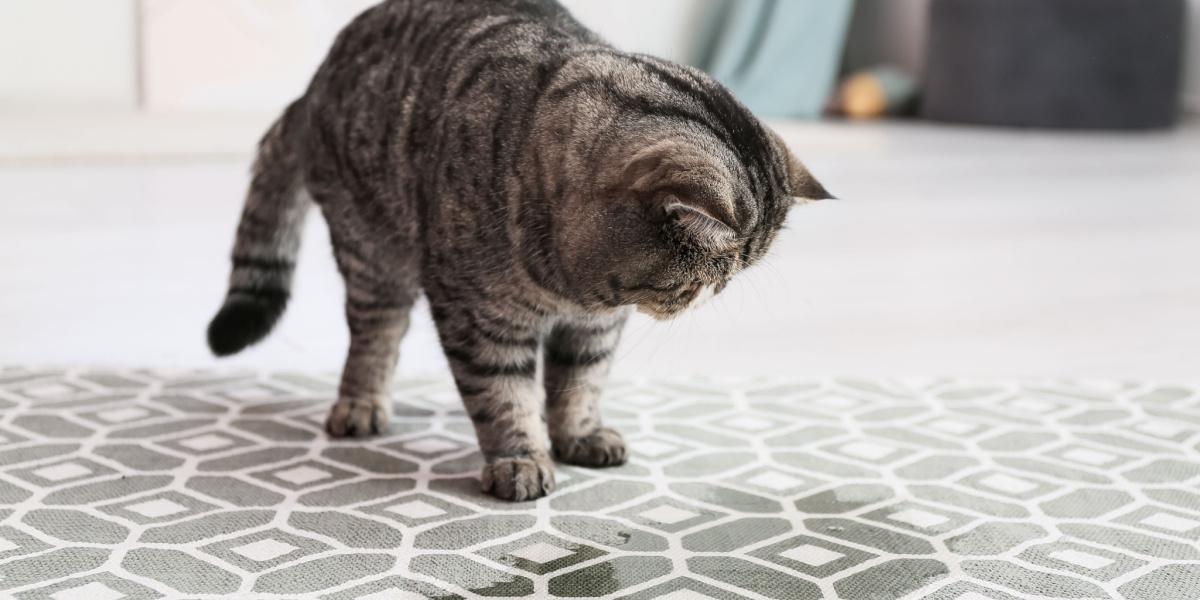
Color, consistency, and volume of cat pee can tell quite a lot about cat health.
It can be difficult to assess what your cat’s pee looks like, as cats usually like some privacy when they use the litter box. However, there are some tale-tell signs when something is amiss.
Normal cat urine is a clear, pale golden-yellow color. It shouldn’t be cloudy, or have any small particles floating around in it. Even when mixed with your cat’s litter, changes to color such as cloudiness, or a pink/red tinge can often be noticeable.
Cloudy urine can indicate a urinary tract infection, and a pink or red color indicates that blood is present. This is often due to an inflammation of the bladder, or some form of feline lower urinary tract disease. Both of these situations require an appointment with a veterinarian.
Also Read: What Is The Best Place To Put A Litter Box?
How Normal Cat Pee Smells
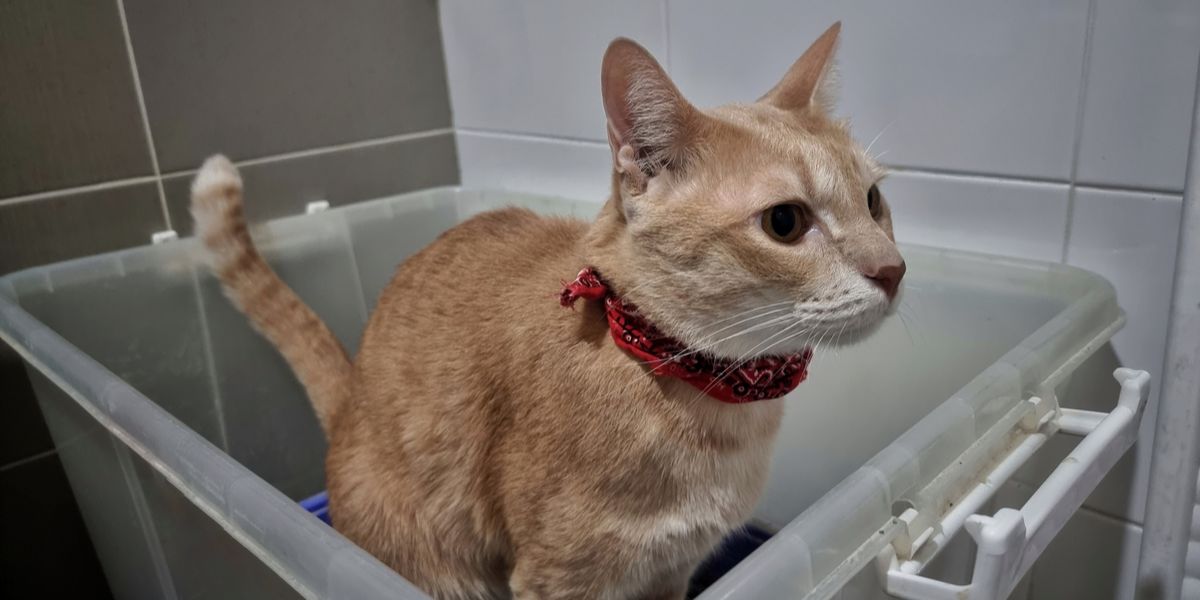
While cat pee is known to have a strong scent, the smell itself is an indicator of health.
Cat urine smells slightly acidic, with a pungent but not overwhelming scent. Most pet owners get quite used to the smell of the litter box and only notice the odor if there is a significant change.
The main cause of the acidic smell is the ammonia compound, which is formed when a bacterium breaks down urea, a waste product of digestion that is flushed out of the body in urine. The cat pee smell does vary between individuals but is generally inoffensive in healthy cats.
Also Read: How To Get Rid Of Cat Pee Smell
Why Some Cats Have Smelly Pee
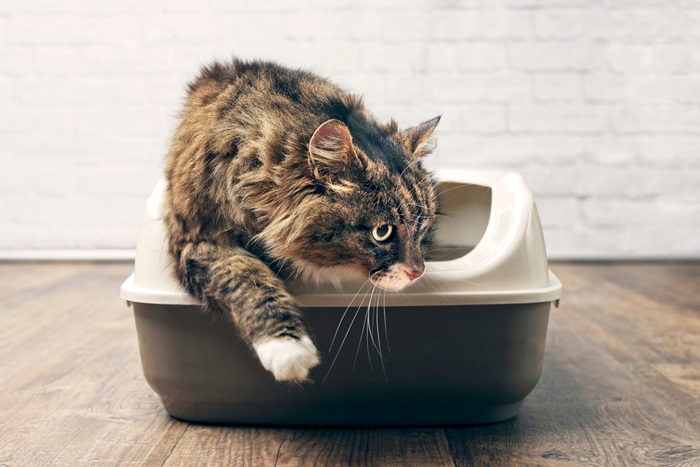
There are multiple factors that go into the scent of cat pee.
The odor of a cat’s urine can vary. There are some reasons why your cat’s pee may be smellier than others.
- Cat food – All cat diets are high in protein, but some produce more urea in digestion than others. This will lead to a more concentrated ammonia smell.
- Hydration – Cats are good at conserving water, and can produce very concentrated urine, which will smell more pungent.
- Spraying – If your cat is urine marking rather than usual toileting, the urine may be strong-smelling and in very obvious places around the house rather than concealed in your cat’s litter tray.
- Infections – Urinary problems such as bladder infections can change the odor of cat pee.
- Hormones – Male cats especially can have changes to the scent of their urine due to hormonal imbalances.
- Tumors – Cancers of the urinary tract can cause alterations to cat urine.
If you’ve noticed a change in your cat’s urine smell, seek advice from a vet.
How Your Cat’s Pee Can Tell You If They’re Sick
The color, odor, volume, and location of your cat’s pee may not tell you everything about your cat’s health, but they can be good early indicators that something may be wrong.
1. Blood In Cat Pee
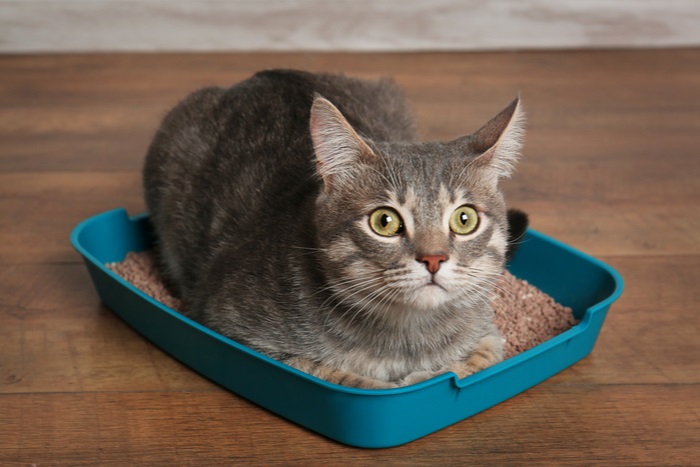
Blood in your cat’ urine is often a sign of urinary tract inflamation.
Bloody urine can present along a spectrum of severity, from pee that is slightly pink-tinged in color to large and obvious blood clots passed. The presence of blood in the urine usually indicates that some or all of the urinary tract is inflamed or damaged.
This may be due to infection, bladder stones or crystals, stress, or other causes. Blood may also present due to a clotting problem or a blood disorder.
2. Sweet-Smelling Urine
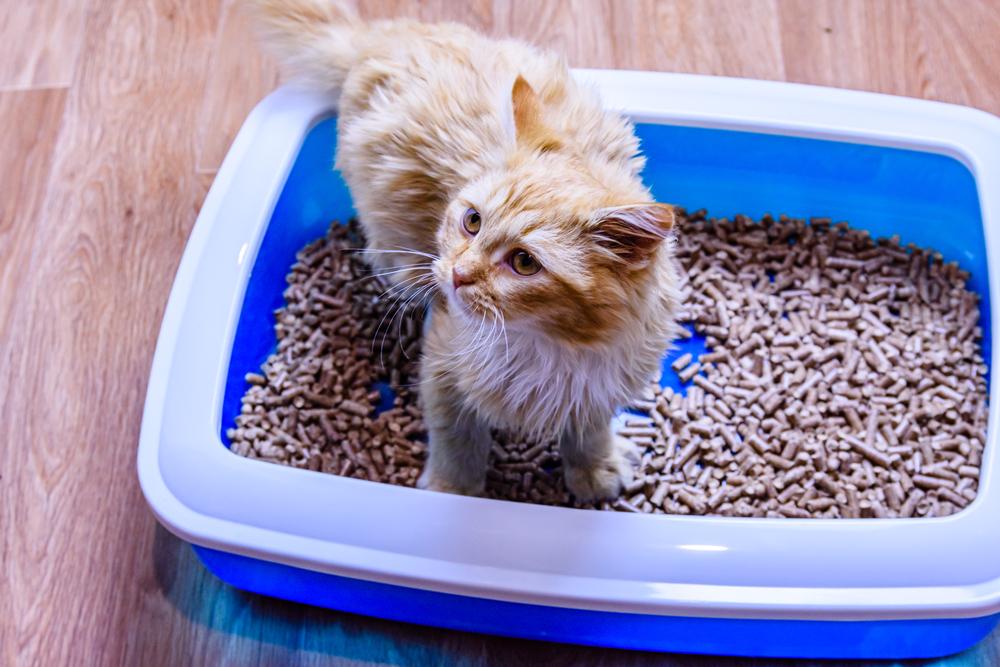
A sickly-sweet smell to your cats urine could be a sign of diabetes.
Cat urine may smell sweet due to increased sugar content, usually due to diabetes. There are also certain bacterial infections that can cause a sweet, sickly smell to the urine.
Also Read: 7 Best Cat Foods For Diabetic Cats
3. Excessive Urination Or Sudden Increase In Urine Volume
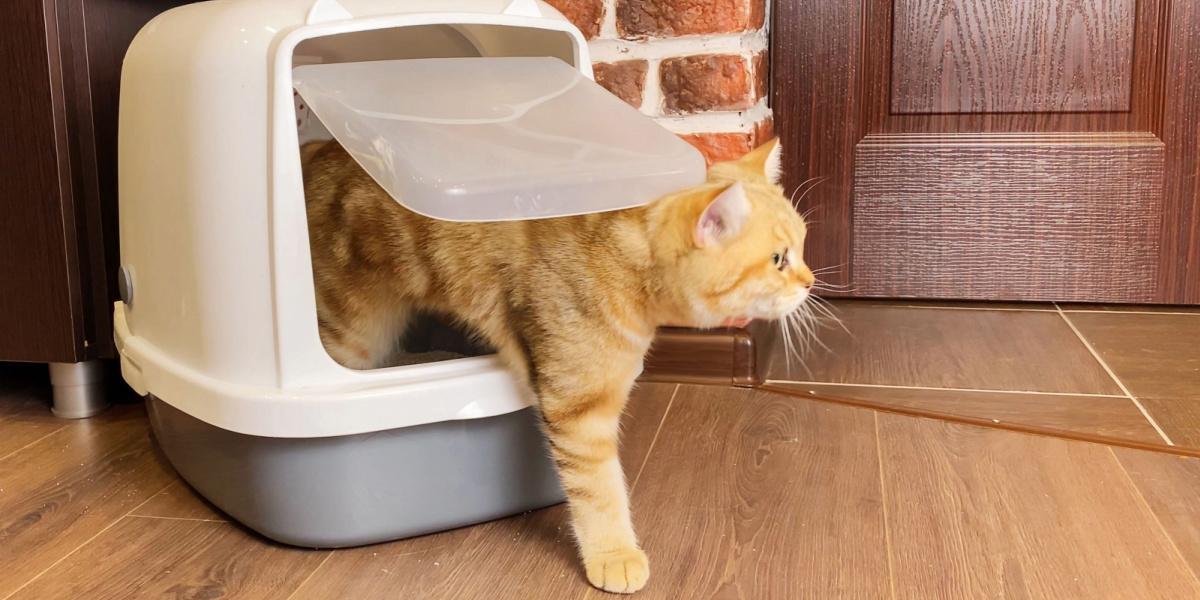
Older cats with certain conditions may start to produce more pee.
If your cat is suddenly producing more pee – either normal amounts but more frequently, or still 2-4 times daily but huge volumes, then there are a variety of causes. There is often an increased thirst alongside the excess urination, so you may have noticed your cat at their water bowl more often.
Kidney disease, diabetes, liver disease, and hyperthyroidism are all fairly common, especially in older cats. Less often, low protein diets, infections, certain tumors, and some toxins (poisons) can also increase urine volume.
4. Peeing Very Little Or Not Peeing At All
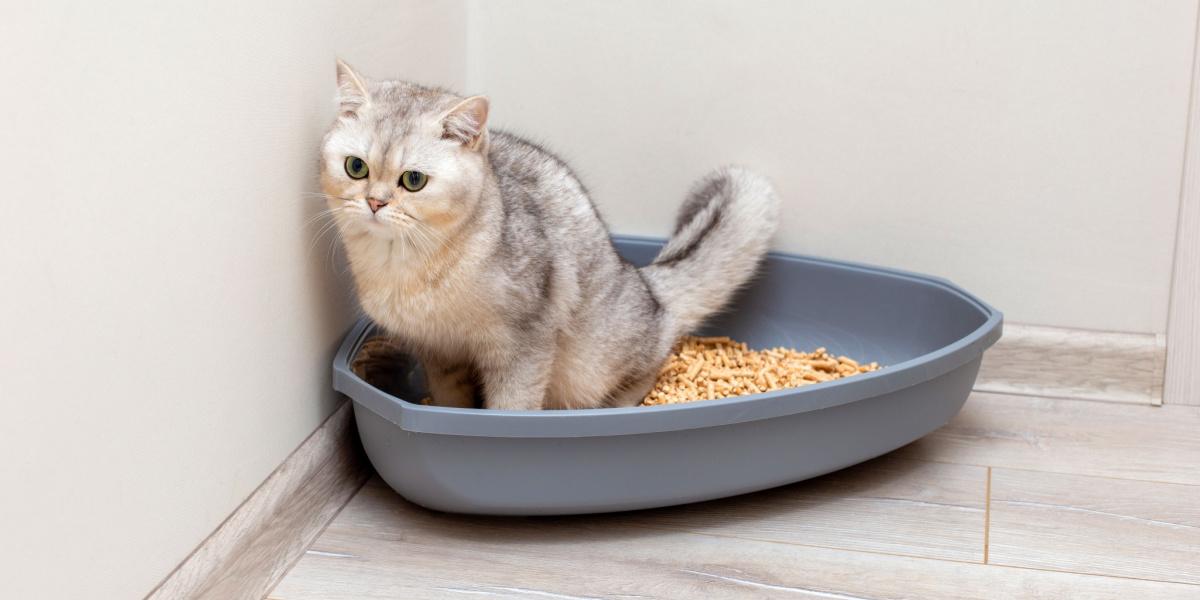
If your cat is having trouble peeing, see a veterinarian immediately.
A sudden decrease in urination can be a serious concern in cats. Crystals and stones can block the narrow tubes of the lower urinary system, obstructing urine flow and causing pressure to build in the bladder and kidneys. Male cats are especially prone to this problem, and a lack of urination should be treated as a veterinary emergency.
Cats may pee less often due to urinary tract inflammation or infection, especially if accompanied by a lot of straining and vocalizing when toileting. Less pee being produced can also be a symptom of dehydration, kidney disease, certain toxins, and other illnesses.
5. Peeing Urgently Or Frequent Litter Box Trips
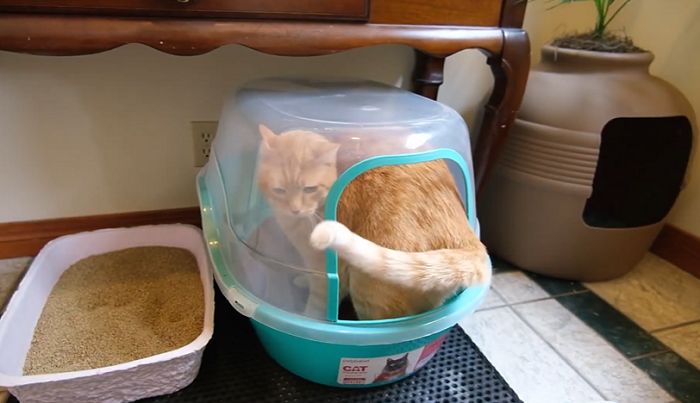
If your cat is making multiple trips to the litter box, it’s time to see the vet.
A cat that is constantly in and out of the litter box, passing small amounts of urine frequently and urgently, perhaps with some straining and vocalizing, may well be experiencing a urinary disorder such as cystitis. Stress can also lead to altered toileting behavior, including more frequent trips to the litter tray.
6. Inappropriate Elimination

If your cat is going to the bathroom outside of their litter box, it can be more than a nuisance – it can be a sign that something is wrong.
A common symptom of both stress and urinary disorders is urinating outside of the litter tray. This is a huge signal from your cat that something is wrong. It may be as simple as your cat is fussy and you aren’t keeping the litter box as sparkling clean as they would prefer. Then again it also may be a medical or behavioral problem.
This behavior is also cumulative. The urine smell will persist on the couch/carpet/hardwood floors or wherever your cat has chosen, and your cat will then be triggered by the odor to urinate in the same place again.
If your cat is having toileting issues and you have found cat urine stains, use enzymatic cleaners to remove all traces of the cat pee. You should also investigate the cause of the behavior as well.
7. Urine Spraying
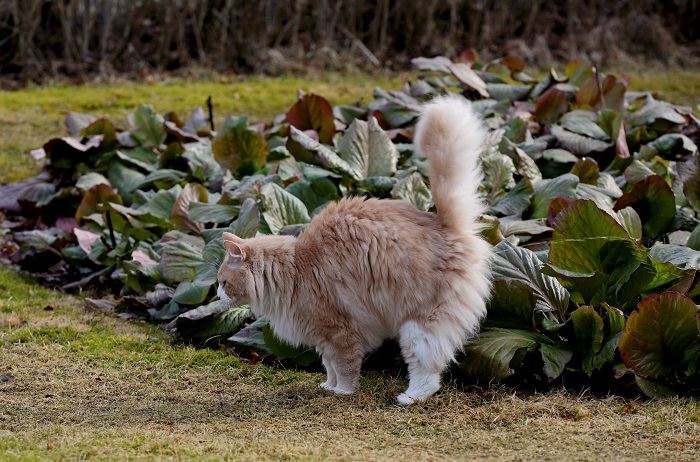
Cats have multiple ways to “mark” their territory, and unfortunately spraying urine is one of them.
Urine-marking behavior can occur in cats who are either looking for sexual partners or who are staking out their territory. It can be differentiated from normal urination as it is usually in small amounts, on a vertical surface, and in busy areas. Underlying stressors should be addressed, such as inter-cat conflict, and the site should be cleaned with an enzymatic cleaner.
8. Everything Else
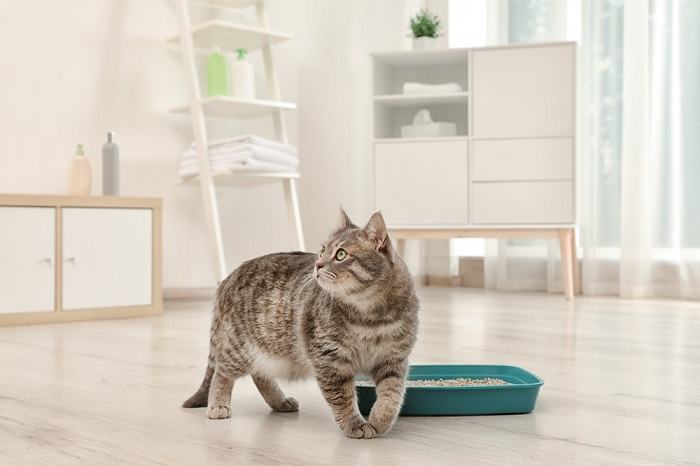
Feline behavior can be subtle. Take note of changed in your cat’s habits to make sure something more serious is not affecting their wellbeing.
If you notice any changes to your cat’s urine, such as volume, frequency, smell, odor, color, or the location where they relieve themselves, it is worth investigating, even if it seems like a minor thing. Cats often display only subtle signs that something isn’t quite right with them.
How To Monitor Your Cat’s Urine
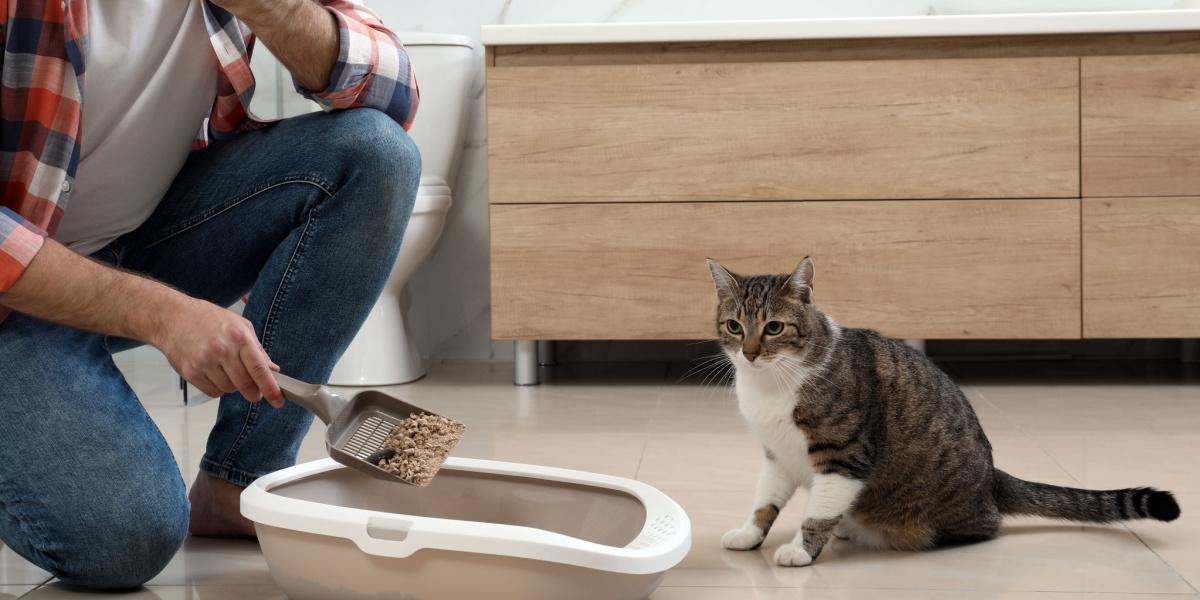
When cleaning your cat’s litter box, pay attention to the size and number of clumps to understand how much and how often your cat uses the litter box.
It may seem like an impossible task to know much about your cat’s pee by peering into the litter box and trying to determine color, volume, odor and occurrence of blood. There are non-absorbable cat litters on the market, and they are useful if you think there may be something wrong with your cat’s pee. There are also types of two-tiered litter trays that can help you monitor your cat’s urine.
The really important parameter to monitor is any kind of change. Gaining a decent understanding of your cat’s usual habits is invaluable for you to be able to quickly and accurately assess if something changes. Even subtle alterations to your cat’s usual toileting habits can be significant in terms of health, behavior, and well-being.
When You Should See A Vet
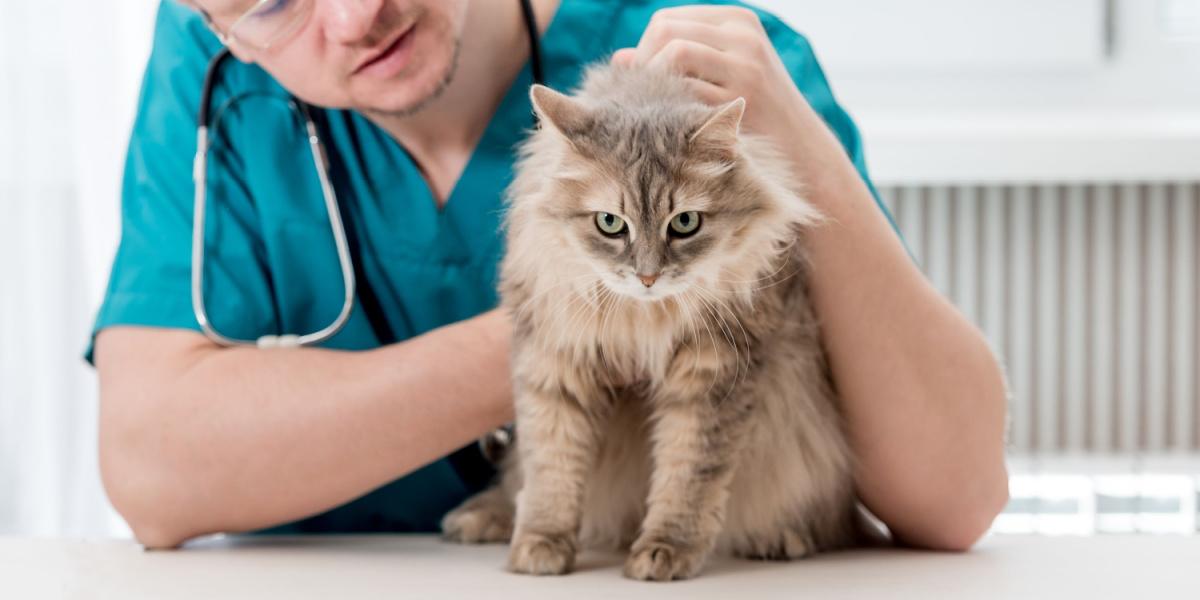
When in doubt about what your cat’s pee is telling you, a trip to the vet is a good idea.
If you are concerned about any changes to your cat’s health or behavior, contacting your veterinarian is always recommended. A vet can give advice and perform a health check.
Cats who seem well but occasionally urinate in places around the home may be suffering from mild stress. Ensuring they have a safe place to hide and access to key resources such as food, water, and a litter tray in an accessible place are good steps to take to help them. You may also consider a pheromone diffuser.
Bloody or cloudy urine, excessive thirst and urination, and frequent litter box trips should all warrant a trip to the vet. Any cat who seems unable to pass urine at all should be seen as an emergency.
Also Read: How To Clean Your Cat’s Litter Box
Keeping a close eye on your cat’s pee and toileting habits can provide useful indicators of their health and well-being. Monitoring for changes to urine volume, frequency, color, odor, and consistency can all be hugely worthwhile to quickly pick up on signs of common diseases such as cystitis, diabetes, and kidney disease. Monitoring changes to urine may not be particularly glamorous, but it is an important aspect of responsible cate ownership.
